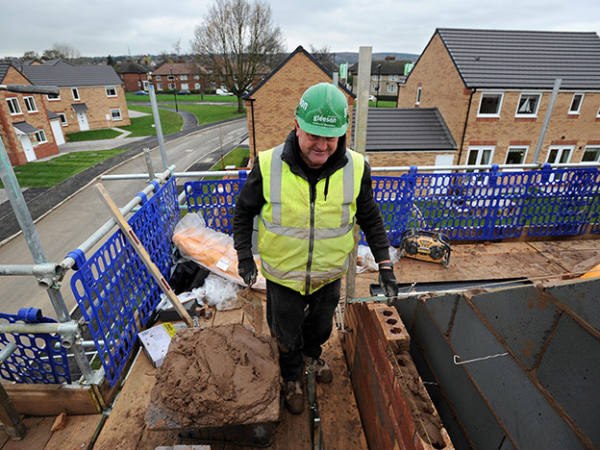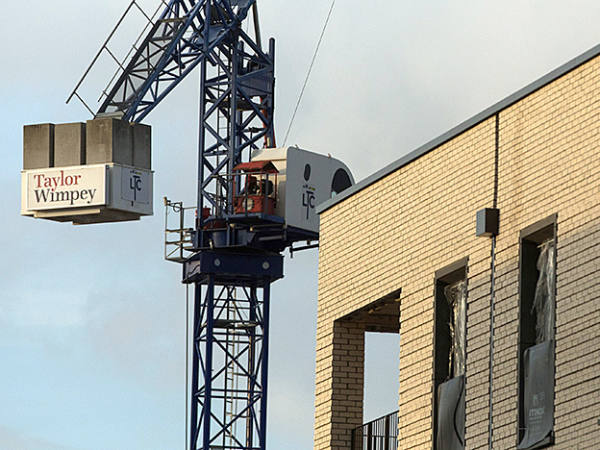- The government’s help to buy scheme has propped up the housebuilding sector for a decade
- The stamp duty holiday has been seen as the major driver behind housing market strength in 2021
For almost a decade the UK’s quoted housebuilders have benefited from generous government housing policy, in particular Help to Buy (HTB) boosting new housing demand and, more recently, cuts in Stamp Duty (SDLT) that have driven up the wider market. Higher demand has pushed house prices up, leading to stronger margins, high profit growth, strong free cash flow and generous dividends from the sector.
As these positive, external factors come to an end, what does this mean for investment in the sector? HTB is already winding down, SDLT fully returns this autumn and other headwinds are forming. The housebuilders certainly face tougher trading, so should investors be wary of this sector? Not necessarily.
Help to Buy – any alternatives?
HTB has been the UK housebuilders’ most important aid, making it both easier and cheaper to buy a new home than an existing one. HTB users only need a 5 per cent deposit and in today's tighter mortgage market that is a major plus. The scheme has either enabled, brought forward or boosted buyers’ purchasing power on over 300,000 new home sales.
Builders rely heavily on HTB, using it to sell more than 40 per cent of their output. This means more homes can be sold, higher prices achieved (savings from HTB are more often used to trade up to larger homes than reduce mortgage costs) and builders’ sales/marketing costs are lower. The net result has been higher revenues at higher returns, with sector EBIT margins 400-500 basis points higher than long-run norms.
Savings for a buyer using the scheme have been considerable. There are five years of interest-free borrowing on the 20 per cent (40 per cent in London) loan from the government and despite having only a 5 per cent deposit, HTB users can borrow at less than a 2 per cent interest rate.
This means that at the average HTB purchase price (£320,741: Q4 2020) savings for a buyer with a 5 per cent deposit total c.£32,000 over five years. That and the low deposit requirement have helped new homes’ share of total housing activity rise from a long-run average of 10-11 per cent to near 15-17 per cent.
| Saving available using HTB – 20% loan | ||
Mortgage | Monthly | Over 5 years |
HTB: 75% LTV at 1.75% | £766 | £45,981 |
Non-HTB: 95% LTV at 3.7% | £1,295 | £77,692 |
Saving over 5 years | £31,711 | |
Source: Investors Chronicle, BankStats, NatWest
But since the start of April, HTB has been restricted: only first-time buyers (FTB) can now apply (19 per cent of users to date are not FTBs) and there are now regional price caps. All things remaining equal, the sector’s use of HTB is likely to decline as more homes and more buyers become ineligible by class and price-point.
The latest HTB statistics (Q4 2020) showed that only a third of users bought what was historically considered a starter home (flat or terraced house): almost two-thirds bought a semi-detached or detached house. Under the price caps, these larger homes would likely be ineligible. Barratt Developments’ (BDEV) first-half results showed that while 46 per cent of unit sales used HTB, close to half would now be ineligible – this is a fair proxy for the whole sector.
The UK’s housebuilders, therefore, risk selling fewer homes, achieving a lower average price due to the price cap and incurring higher cost to replace those sales – savings under HTB were a powerful sales incentive. A second leg down will come when the scheme fully closes in 2023.
Is this decline inevitable or could HTB be replaced? It feels unlikely that the government will extend HTB again – there have already been two substantial extensions and the scheme has already absorbed £19bn of taxpayers' money. A mortgage indemnity programme for lenders offering high loan-to-value (LTV) mortgages has been introduced which may be the extent of fresh state intervention. There is also the First Homes scheme in which qualifying FTBs get a 30-50 per cent discount versus open market which they must pass on when they sell. This is barely a replacement for HTB as it is small scale, has a lot of restrictions on buyer profiles and price, is effectively social not open market housing and would make scant profit for the housebuilder.
Private sector solutions from financial companies looking to tap house price inflation might arise. Unlike mortgage lending, shared equity funders benefit from house price inflation, offering potential high returns. But the upside probably isn’t enough: house price growth in the eight years of HTB averaged just 4.2 per cent, probably insufficient against the risk of default and falling house prices.
Housebuilders could use their balance sheets to fund shared equity, as they did before HTB but the industry was never happy doing this. Loans were smaller than that provided by HTB and never came close to supporting more than 40 per cent of sales. Shared equity is expensive and every 1,000 20 per cent equity loans would tie-up £50m-£60m of capital for at least five years. For a builder the size of Barratt Developments, the capital commitment could push £400m per annum which would divert free cash flow away from dividends.
A replacement solution may arise but it feels more likely that the housebuilders will instead have to absorb lower sales, shrinking margins, weaker profits and lower free cash flow as HTB closes down.
Stamp duty holiday
In July 2020 the government raised the starting level for Stamp Duty Land Tax (SDLT) from £125,000 to £500,000 allowing close to 90 per cent of all housing transactions to escape the tax. This is held to be largely responsible for the recent strength in the housing market, as buyers looked to bank savings and are now rushing to avoid having to pay the duty once it partly returns in July and is fully reinstated in October.
Seasonally adjusted housing transactions rose to 183,000 in April 2021, almost double the average monthly activity in the five years pre-Covid. The UK housing market is ill-suited to absorb such large supply/demand imbalances and high selling price inflation has been the inevitable result. Nationwide reports that house prices are 11 per cent higher over 12 months.
But there is something of a dichotomy here. If buyers are just looking to avoid paying what is, on the majority of house purchases, a moderate amount of tax, they are likely to cost themselves much more than they save. The increase in price and the extra mortgage payments are a sizeable multiple of the SDLT saving at all price points.
| SDLT savings and house price inflation – assumes 85% LTV | ||||
House price | Mortgage 35 yrs @1.74% | Total repaid | SDLT saved | Extra cost over mortgage life |
£216,403 (1) | £585 | £245,733 | £1,828 | |
£242,832 (2) | £657 | £275,744 | £30,011 | |
£400,000 | £1,081 | £454,213 | £10,000 | |
£448,851 | £1,214 | £509,685 | £55,472 | |
£700,000 | £1,893 | £794,873 | £25,000 | |
£785,490 | £2,124 | £891,949 | £97,077 | |
Source: Investors Chronicle, (1) Nationwide BS UK average house price – June 2020, (2) Ditto May 2021
This should ring alarm bells that buyers will see the folly of paying £5 extra to save £1 of tax. After September, buyers face paying both SDLT and higher prices. However, key housing market observers appear relatively relaxed about the return of SDLT and are confident that demand and prices can be sustained. How so?
Demand remains well ahead of supply with Covid-led relocations adding to demand and the mortgage indemnity scheme expected to create additional buyers, so an imbalance will remain. As the attraction of buying a new home fades after HTB ends, more buyers may also drift across into the existing homes market adding pressure to the fixed supply there.
In reality, SDLT for many buyers is not especially high so its return need not freeze buyers out or throw prices into reverse. In most UK regions, the average first-time buyer will pay no stamp duty (they are exempt up to £300,000) and even in London duty for the average first home equates to little more than 1 per cent of the purchase price, much less than even a minimum deposit. For home movers in many regions, SDLT is a similarly low percentage of the purchase price and is, in practice, funded by equity released from the sale rather than being a cash payment. Over 50 per cent of primary residence transactions (ie, excluding second homes and buy-to-let) are either exempt or pay SDLT at less than 1 per cent of purchase price and another one-third pay between 1 and 3 per cent: this ought not to bear too heavily on demand or pricing.
| Regional house prices and SDLT levels for FTBs and home movers (Q1 2021) | |||||||
UK economic region | FTB Avg price | SDLT from 10/21 | 5% deposit | Mover Avg price | SDLT from 10/21 | SDLT as %age of price | 5% deposit |
North | £110,556 | £0 | £5,528 | £169,659 | £893 | 0.53% | £8,483 |
Yorks & Humberside | £130,464 | £0 | £6,523 | £206,578 | £1,632 | 0.79% | £10,329 |
North West | £139,613 | £0 | £6,981 | £217,329 | £1,847 | 0.85% | £10,866 |
East Mids | £162,837 | £0 | £8,142 | £232,654 | £2,153 | 0.93% | £11,633 |
West Mids | £168,748 | £0 | £8,437 | £244,304 | £2,386 | 0.98% | £12,215 |
East Anglia | £190,469 | £0 | £9,523 | £276,341 | £3,817 | 1.38% | £13,817 |
Outer South East | £232,517 | £0 | £11,626 | £340,709 | £7,035 | 2.06% | £17,035 |
Outer London Metro | £294,588 | £0 | £14,729 | £436,247 | £11,812 | 2.71% | £21,812 |
London | £416,682 | £5,834 | £20,834 | £564,904 | £18,245 | 3.23% | £28,245 |
South West | £210,817 | £0 | £10,541 | £297,738 | £4,887 | 1.64% | £14,887 |
Sources: Nationwide, ONS, Investors Chronicle
Many observers hope SDLT will be permanently scrapped and while this would remove some heat from the market, buyers would see this as a positive. Keep an eye on the Tory party conference for this.
Scrapping SDLT is a popular notion but has a sting in the tail. Prior to the pandemic, annual residential receipts totalled £8.4bn in fiscal 2019/20 and a government short on cash will need to replace this. Relying on economic multipliers from a booming housing market feels risky and higher, recurring property taxes on all homes may have to be introduced.
The skewed financial effects of accepting large price rises to secure smaller SDLT savings suggest that the removal of the duty was one of an array of factors, rather than the sole driver. That being the case, its reinstatement is unlikely to throw the market into reverse but may dampen things down.
Where is the fallout?
The housebuilders certainly face headwinds from the end of HTB, although the SDLT changes feel less of an issue. Core demand, the average size of house sold, selling costs and market share loss to existing homes (due to the new mortgage indemnity scheme and removal of the substantial cost savings in HTB) are all direct fallouts. Higher building materials prices and labour costs are also on the horizon. There is also discussion of targeted higher taxes to help fund cladding issues, potentially direct costs for cladding replacement on own developments and possibly compensation for issues arising from the abuse of leasehold sales. Sector profitability certainly looks to be under fairly material threat.
Earlier, I suggested that despite the risk to margins, cash flows and dividends, share valuations were unlikely to fall. There are two main reasons for this view.
Firstly, major share price movements are driven by shocks and surprises but all of the issues discussed here are well signposted, the negatives understood and downside risk already rolled into valuations. Unless house prices fall sharply because of a surprise SDLT update or lenders baulk at higher house prices, it is more likely that share price impact from these key interventions ending will be neutral or that surprises will be positive – ie, scrapping SDLT outright, new government housing policies or viable HTB replacements arising.
Secondly, quality of earnings. The housebuilding sector often appears to be cheap, but there are many reasons supporting a discount rating and investors should be wary of mistaking this for under-valuation. Housebuilders attract lower ratings because they deliver a lower quality of earnings relative to better stocks and sectors. This is a whole different discussion but the windfall nature of profits driven by temporary policies such as HTB is a major issue here. If that windfall element is cut out, the quality of earnings rises and potentially by more than the drop in earnings and dividends. Less is more.
So, housebuilders’ risk earnings decline as distorting government policies end but ironically stock ratings should improve for the same reason. What might appear to be major negatives feel at worst neutral and surprises look more likely to be positive than negative in the next two years. An initial response might be to exit investment in this sector but that feels premature. As a high beta sector, the housebuilders are likely to amplify the positive trends of the UK stock market and with reasonable yields still on offer, it might be wise to stay put.











